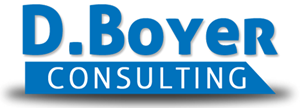Business is mostly conducted via email or phone communications.
Office hours 10:00 a.m. to 6:00 p.m, Mon. - Thurs., and 10:00 a.m. to 2:00 p.m. on Fridays.
SEND EMAIL INQUIRIES DIRECTLY TO:
Dawn.Boyer@me.com
Business is mostly conducted via email or phone communications.
Office hours 10:00 a.m. to 6:00 p.m, Mon. - Thurs., and 10:00 a.m. to 2:00 p.m. on Fridays.
SEND EMAIL INQUIRIES DIRECTLY TO:
Dawn.Boyer@me.com
Business is mostly conducted via email or phone communications.
Office hours 10:00 a.m. to 6:00 p.m, Mon. - Thurs., and 10:00 a.m. to 2:00 p.m. on Fridays.
SEND EMAIL INQUIRIES DIRECTLY TO:
Dawn.Boyer@me.com
Print On Demand Publishing: A Unique Business Marketing Tool
July 15th, 2014 by Dawn Boyer
Print On Demand: A unique marketing tool for business?

Creating a Print on Demand (POD) book that provides business expertise in a field will enhance the reach of marketing to your target audience
Why should entrepreneurs think about creating their own book? Did you know a self-published book is a unique marketing tool? When you start a business, you are banking on yourself as the subject matter expert (SME), you are selling knowledge you have accumulated over the years, and demonstrating your expertise by making money in the business. What better way to illustrate your capabilities by providing samples and advice, as well as demonstrating why you are the expert in your field?
Have you compiled dozens of blog articles for your business website? If so, create a compendium of those blog articles and offer it for sale online or as a free give-away marketing tool to potential customers. (Words are copyrighted, so don’t plagiarize; but ideas are open to re-interpretation.)
What holds many people back from self-publishing is they think they have to pay thousands of dollars to a publisher to get the book edited, formatted (lithographic services), illustrated, obtain ISBN numbers, and complete the copyright paperwork. If the authors are Internet and computer savvy, an initial investment can be less than $300. If the authors prefer to let publishing houses do it for them, costs can run from $1- $10K!
Print On Demand – low cost or free!
One idea that a Publish-on-Demand publishing company has started to offer is ‘delayed royalty payments.’ The author earns royalties after the publishing set up costs are paid for via earned royalties ‘fronted’ by the publisher. This incentivizes the author to push buyers to purchase the books online to get the invoice paid quickly so they can start earning direct royalties from the book(s).
Another reason to create a book as a marketing tool – give-away books are kept longer or get passed around more than marketing brochures, pamphlets, or business cards. A full color book may cost around $6.00 – $12.00 each if purchased wholesale, but may sell for $19 or more online. Royalties from online sales may be enough to pay for the give-away books the business owner personally hands to potential or current clients as promotional give-away. Even better, adding in hot-links to e-books encourage sales via e-book readers and QR codes added to hardcover books enables readers to visit a business website faster or grab POC information easier.
Tell a story, but do so as the master in the writing of the story and the style elements. The important aspect is to ensure professionalism. Grammar, spelling, and punctuation are a professional writer’s tools. Typos are annoyances that pull the reader out of the story. Understand you need a command of your language and competence in basic grammar and familiarity within the conventions of writing.
As a writer and business owner – respect the language. Bad grammar, typos, poor spelling, and misuse of apostrophes put readers off. Clumsy sentence structure and misspelled words distract readers away from the story. Readers are literate enough to know the difference between good and bad writing. Not a writer? Tell your story – then let a professional editor craft the message.
There are plenty of free or low-cost tools you can use to get that book written. Can’t type? Use Dragon Dictation to orally transcribe what you want to say. Don’t know where to start? Use free online outline tools. Have other authors already written the book you wanted to write? Use their structure, outline, and ideas to ‘rewrite’ your own version in your words and illustrate it with your photos.
Don’t know how to create illustrations or add photos for interest in your Print on Demand book? There are thousands of free to use public domain photos and graphics available on the Internet. Query Google images. Set the filter to “Labeled for Reuse with Modification” or “Labeled for Reuse.” You can legally use those graphics. Most folks with a ‘smart phone’ have high quality HDR capability and can take a quick shot of an office environment, outdoor scene, or examples of their business product or services.
There are so many tools and options today for free and low-cost software to assist business owners and aspiring authors to write their own books. Creating a book to assist in selling your products and services is a reasonably low-cost method of getting your message ‘out there’ to promote more sales and revenue.
Dawn Boyer, #Ph.D., #owner of D. Boyer Consulting – provides Resume Writing, #Social Media Management / Training, #Business Development, #Human Resources Consulting, #and Print-On-Demand Author Coaching / Consulting. Reach her at: Dawn.Boyer@DBoyerConsulting.com or https://dboyerconsulting.com.
Readers Comments
Print On Demand Publishing: A Unique Business Marketing Tool
July 15th, 2014 by Dawn Boyer
Print On Demand: A unique marketing tool for business?

Creating a Print on Demand (POD) book that provides business expertise in a field will enhance the reach of marketing to your target audience
Why should entrepreneurs think about creating their own book? Did you know a self-published book is a unique marketing tool? When you start a business, you are banking on yourself as the subject matter expert (SME), you are selling knowledge you have accumulated over the years, and demonstrating your expertise by making money in the business. What better way to illustrate your capabilities by providing samples and advice, as well as demonstrating why you are the expert in your field?
Have you compiled dozens of blog articles for your business website? If so, create a compendium of those blog articles and offer it for sale online or as a free give-away marketing tool to potential customers. (Words are copyrighted, so don’t plagiarize; but ideas are open to re-interpretation.)
What holds many people back from self-publishing is they think they have to pay thousands of dollars to a publisher to get the book edited, formatted (lithographic services), illustrated, obtain ISBN numbers, and complete the copyright paperwork. If the authors are Internet and computer savvy, an initial investment can be less than $300. If the authors prefer to let publishing houses do it for them, costs can run from $1- $10K!
Print On Demand – low cost or free!
One idea that a Publish-on-Demand publishing company has started to offer is ‘delayed royalty payments.’ The author earns royalties after the publishing set up costs are paid for via earned royalties ‘fronted’ by the publisher. This incentivizes the author to push buyers to purchase the books online to get the invoice paid quickly so they can start earning direct royalties from the book(s).
Another reason to create a book as a marketing tool – give-away books are kept longer or get passed around more than marketing brochures, pamphlets, or business cards. A full color book may cost around $6.00 – $12.00 each if purchased wholesale, but may sell for $19 or more online. Royalties from online sales may be enough to pay for the give-away books the business owner personally hands to potential or current clients as promotional give-away. Even better, adding in hot-links to e-books encourage sales via e-book readers and QR codes added to hardcover books enables readers to visit a business website faster or grab POC information easier.
Tell a story, but do so as the master in the writing of the story and the style elements. The important aspect is to ensure professionalism. Grammar, spelling, and punctuation are a professional writer’s tools. Typos are annoyances that pull the reader out of the story. Understand you need a command of your language and competence in basic grammar and familiarity within the conventions of writing.
As a writer and business owner – respect the language. Bad grammar, typos, poor spelling, and misuse of apostrophes put readers off. Clumsy sentence structure and misspelled words distract readers away from the story. Readers are literate enough to know the difference between good and bad writing. Not a writer? Tell your story – then let a professional editor craft the message.
There are plenty of free or low-cost tools you can use to get that book written. Can’t type? Use Dragon Dictation to orally transcribe what you want to say. Don’t know where to start? Use free online outline tools. Have other authors already written the book you wanted to write? Use their structure, outline, and ideas to ‘rewrite’ your own version in your words and illustrate it with your photos.
Don’t know how to create illustrations or add photos for interest in your Print on Demand book? There are thousands of free to use public domain photos and graphics available on the Internet. Query Google images. Set the filter to “Labeled for Reuse with Modification” or “Labeled for Reuse.” You can legally use those graphics. Most folks with a ‘smart phone’ have high quality HDR capability and can take a quick shot of an office environment, outdoor scene, or examples of their business product or services.
There are so many tools and options today for free and low-cost software to assist business owners and aspiring authors to write their own books. Creating a book to assist in selling your products and services is a reasonably low-cost method of getting your message ‘out there’ to promote more sales and revenue.
Dawn Boyer, #Ph.D., #owner of D. Boyer Consulting – provides Resume Writing, #Social Media Management / Training, #Business Development, #Human Resources Consulting, #and Print-On-Demand Author Coaching / Consulting. Reach her at: Dawn.Boyer@DBoyerConsulting.com or https://dboyerconsulting.com.












